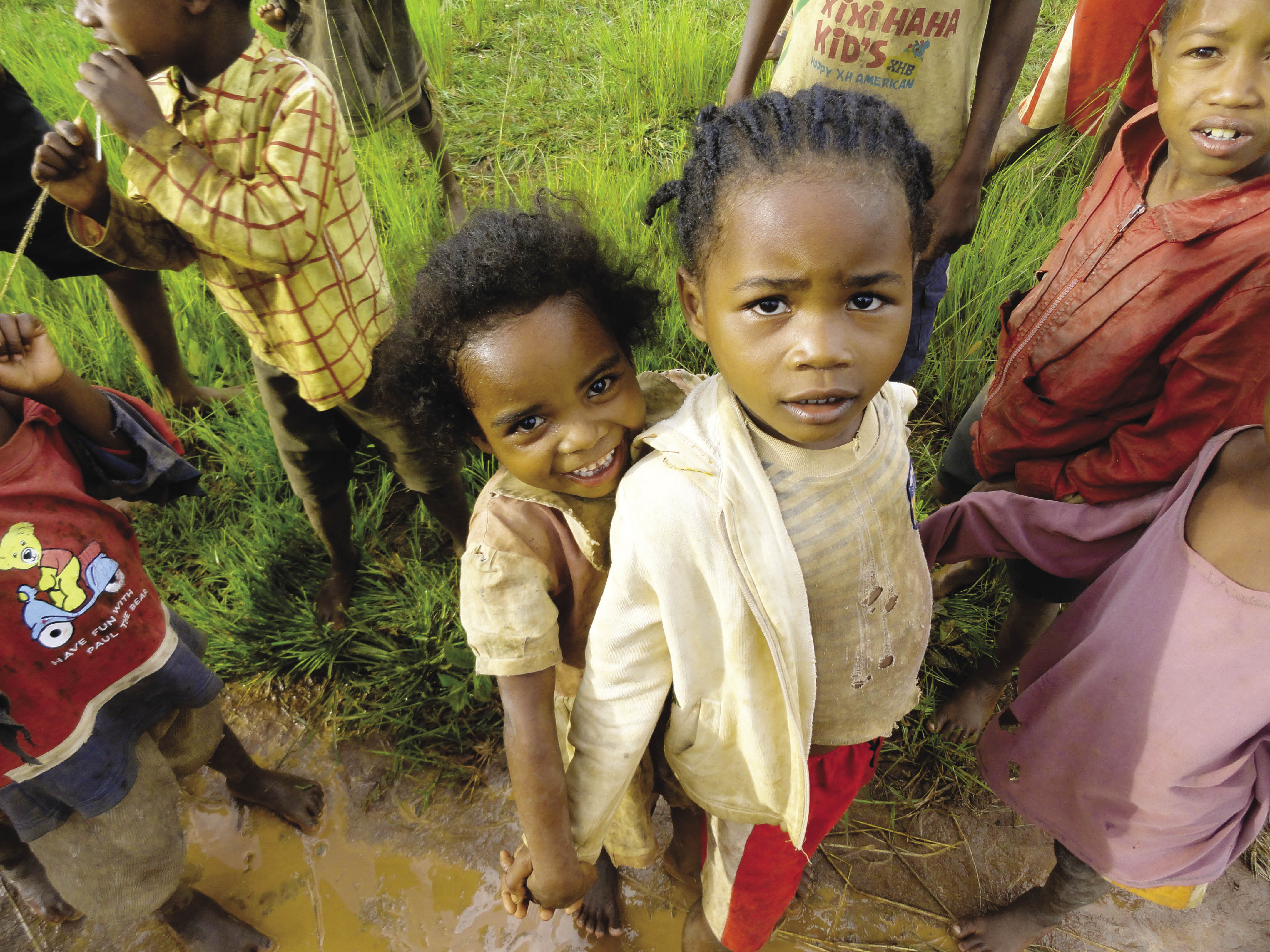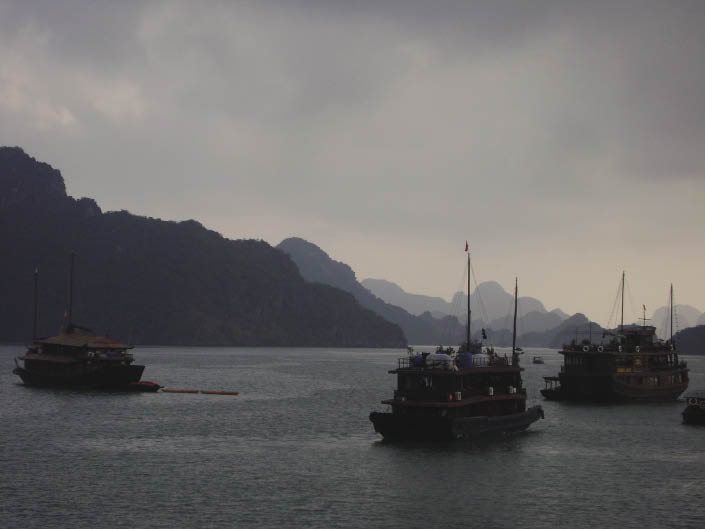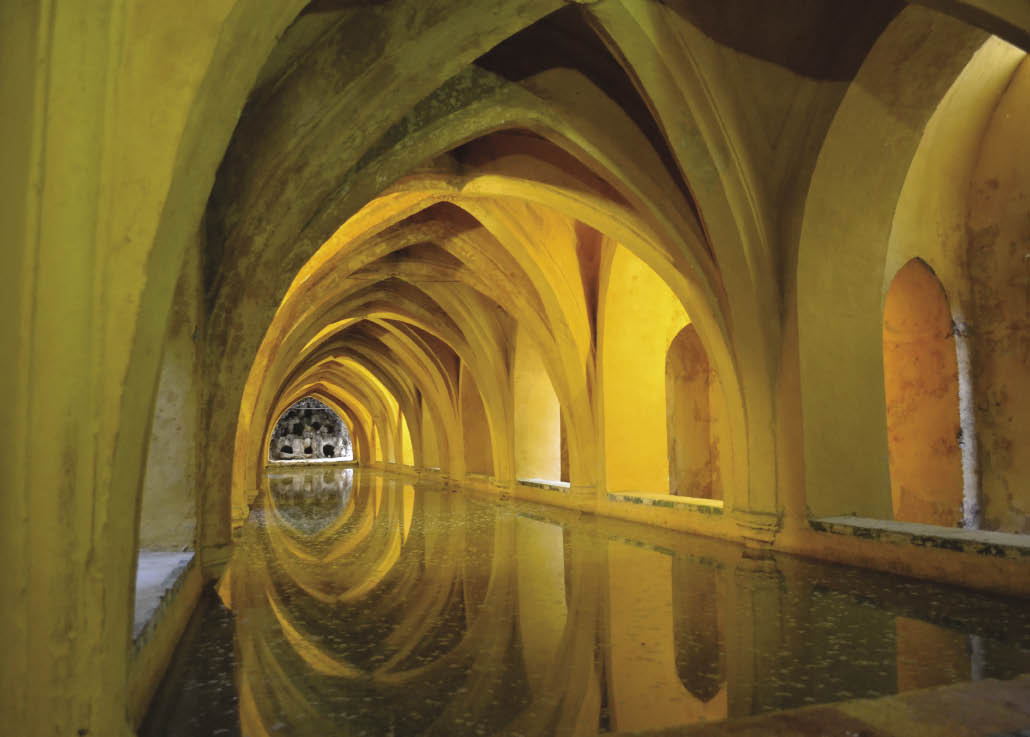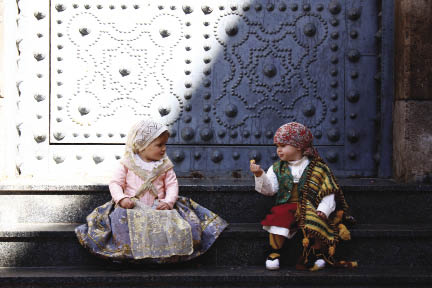Seville, Spain
Reales Alcazares — Zina Model ’13
A Spanish minor who wanted to strengthen her skills in the language “while diving into a cultural experience in a traditional city,” Zina Model describes Seville, a millennia-old city and capital of the region of Andalucia, as “the heart of traditional Spain.” The city was founded by indigenous Iberian people, and passed through the hands of the Romans, Moors, and Castilian Catholic rulers Ferdinand and Isabella. Model loved learning about Andalucian and Sevillano customs and culture, living with a host family, and studying through a Council on International Educational Exchange program. She also took classes at the University of Seville. Captured in the royal palace of Seville, known as the Reales Alcazares, the photo portrays “a unique example of Moorish architecture,” says Model. The reflection of the interior structure emphasizes the soaring arches and the “richness of the colors.” She took the photograph during her first month in Seville, and it serves as a reminder of “how enamored [she] was—and still [is]—with the beauty of the city.”

ampitiliana, madagascar
Meva sy ianta — Cassandra Stroud ’12
Cassandra Stroud went to Madagascar on a study-abroad program with the School for International Training, a program that focuses on experiential learning for undergraduates in places like Africa, the Middle East, and Latin America, among others. Each student went to a different village for a week where people spoke only Malagasy, a language unrelated to nearby African languages, but with closer ties to those spoken in the Phillipines, Indonesia, and Malaysia. “I went to Ampitiliana, a small village of fewer than 200 people,” says Stroud. “Taking pictures of the children was something fun to do that didn’t require language, and they were enchanted to see themselves on the digital camera screen. The kids would pose, mostly smiling, sometimes not. I would show them the picture afterwards, and we entertained ourselves like that for hours.”

Valle de la muerte, atacama desert, chile
Anfiteatro (Ampitheater) — Anjelais Diaz ’13
Anjelais Diaz was ready to study abroad before she even knew she would be at Barnard. She also knew she would be going somewhere in Latin America to master Spanish, which she had been studying for years. Chile was an unexpected gift, with a culture, politics, and history that were unfamiliar and fascinating. She studied South American literature and Spanish in Valparaiso, a city near the capital of Santiago. On break in September, Diaz traveled to neighboring Peru, then back to Chile to the town of San Pedro de Atacama, where she experienced the last days of the nation’s Independence Day celebrations. She remembers flags hanging from every building and people performing the cueca, the national dance, in the center of town. Diaz ventured out into the desert on a tour and witnessed the stirring sight that is the subject of her photo. “When we passed the Anfiteatro,” she recalls, “this huge theatre-shaped wedge of bald, proud, bright-orange earth in the middle of the driest—and loveliest—desert in the world, the natural beauty of...Chile really came through to me.”
Valencia, Spain
Valencianos Pequeños (Little Valencians) — Sevan Gatsby ’12
Sevan Gatsby “has always had wanderlust” and was especially attracted to the rich cultural history and more relaxed pace of life in Spain. She traveled there initially in 2010 with Barnard Professor of History Jose Moya, where she found that Spain was “beyond anything” she had imagined. Gatsby chose Middlebury College’s study-abroad program for its focus on intensive language learning and immersion in the local culture. Although she selected Madrid as her home base for the semester, Gatsby was eager to explore beyond the country’s capital. Taken on a “spontaneous trip” to Valencia, a vibrant mix of old and new architecture, this photo records a moment during the festival of Fallas. The festival honors St. Joseph, “with processions and parades, copious amounts of sweet-smelling flowers” and ninots, painted puppets, throughout the streets. Each neighborhood displays its own traditional dress, worn by the children in Gatsby’s photo. Here, she explains, the boy had offered a sweet to the girl, who ultimately “scooted away” instead of accepting it. The “entire exchange was so brimming with innocence!” she says, “I just needed to capture it.”

Ha Long Bay, Vietnam
Ha Long Bay — Rachel Collens ’13
Rachel Collens initially didn’t picture herself studying abroad because she was reluctant to leave Barnard for a semester. But the clear focus of the School for International Training International Honors Program, which takes a hands-on approach to studying urban issues, urged her to reconsider. The program took her from Detroit to Brazil to South Africa to Vietnam. Though she didn’t stay in any of the places for long, Collens felt well acquainted with each, thanks to her host families. The family in Hanoi encouraged her to make the trip to Ha Long Bay. She was struck by the shape of the mountains, a sight she knew “only from brush paintings.” Ha Long Bay is a magnet for both tourists and locals; visitors take in the beauty but also contribute to the pollution. Collens paddled a kayak onto the water, but could smell oil and was advised not to swim. Intending to show the beauty of the site while suggesting its pollution; she captured a moody, evocative setting, one that makes Ha Long Bay a must-see for travelers.


